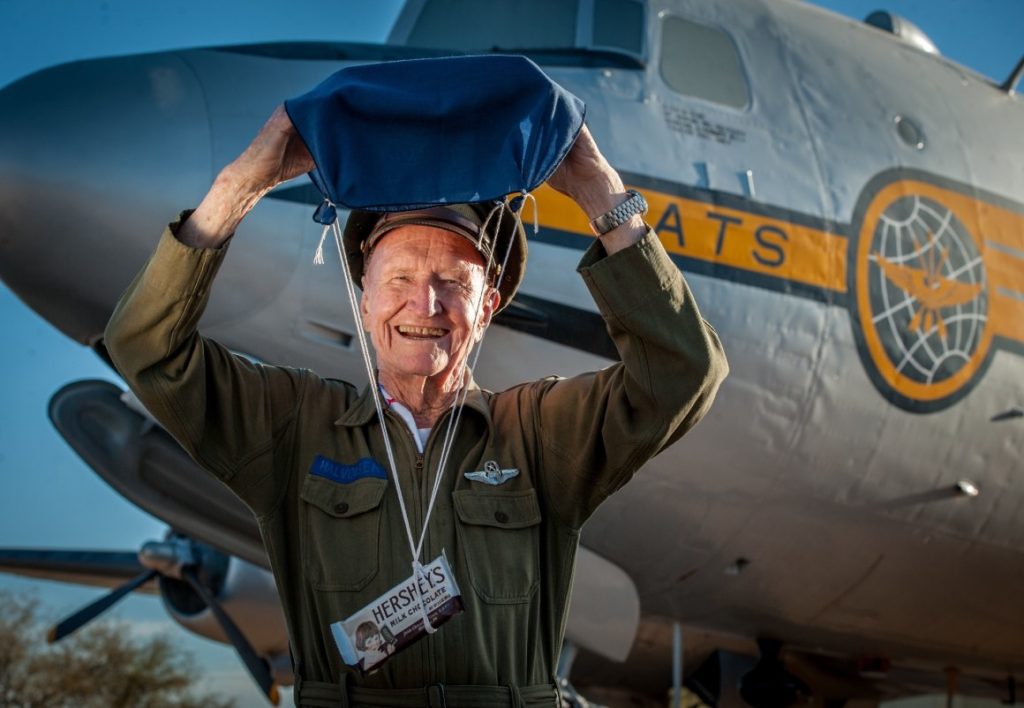
Since its creation around 2000 B.C. by ancient Egyptians, candy has brought joy to children and adults around the world. What few people know is that candy has historically played an important role in the military by providing service members with snacks to help raise morale and give them an energy boost. While a simple joy, candy provided a meaningful opportunity to lift the spirits of the people of Berlin.
After World War II ended in 1945, Germany was split in two: East Germany, controlled by the Soviet Union, and West Germany, controlled by the United States, Great Britain and France. This split was applied across the city of Berlin as well. As the Cold War was beginning in 1938, the Soviet Union blockaded West Berlin preventing any food or supplies from entering to force the western nations out of Berlin. In support of Berlin’s inhabitants, western nations created a plan called Operation Vittles – also known as the Berlin Airlift – to deliver support to West Berlin. Many pilots flew these airlifts between 1948 to 1949, but 1st Lieutenant and pilot, Gail Halvorsen, went above and beyond the call of duty to bring joy to the children of West Berlin with candy.

During the Berlin Airlift, Halvorsen flew 126 missions, and was approached by several children from Berlin who were curious about the planes. Unlike some other children, these children did not ask him for anything even though they were struggling to get food. Halvorsen gave the children two pieces of gum he had in his pocket, and to his surprise, the children willingly divided up the treat. He promised them that he would deliver more candy to them the next time he came and would wiggle the wings of his plane to signal his arrival. From that day on, Halvorsen – known as Uncle Wiggly Wings or the “Candy Bomber” – began Operation Little Vittles to bring candy to the children of Berlin.
Operation Little Vittles caught the attention of other military personnel after an image of Halvorsen’s plane, a Douglas C-54, dropping candy attached to small handkerchief parachutes was printed in a newspaper. Despite performing the candy drops without permission from his superiors, Halvorsen was instructed to continue Operation Little Vittles due to the good public relations the candy drops had caused. People and corporations across the United States rallied behind Halvorsen and donated candy to support his mission to bring hope and joy to the children of Berlin. By the end of the blockade in 1949, Halvorsen and other pilots had managed to drop 23 tons of candy. Since the Berlin Wall was torn down on November 9, 1989, many of the children from Berlin have met with Halvorsen to thank him for his assistance, stating that it helped them hold onto hope. Since retiring from the military, Halvorsen has gone on to deliver supplies and candy to children in Albania, as well as in south Mississippi after Hurricane Katrina. This year, Gail Halvorsen celebrated his 101st birthday, and still enjoys sharing his story with all who will listen.


To learn more about the Berlin Airlift, you can head over to our friends at the National Museum of the U.S. Air Force and the Air Mobility Command Museum.



